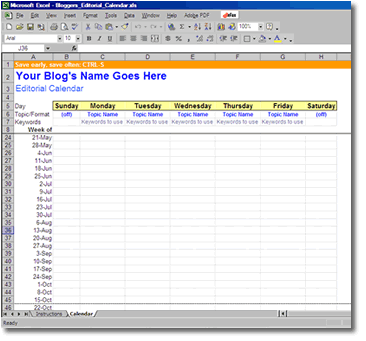How to Create an Editorial Calendar

Editorial calendars are designed to make life easier for writers and editors. Their main purpose is to provide a clear picture of the content that needs to be published on a blog or a website. Another benefit of an editorial calendar is the fact it organises the scheduled content within the overall framework. Writers and other editorial professionals can considerably improve their productivity by using this effective tool. Almost all successful bloggers utilise an editorial calendar to ensure efficient organisation and management. Follow some simple tips and techniques to learn how you can create an editorial calendar.
Things Required:
– Computer
– High speed to internet connection
Instructions
-
1
Before doing anything else, you will need to assess the mission and scope of your blog. Thoroughly examine your blog to determine its overall purpose. It is important to understand the main theme and the content that is used for your blog to successfully create editorial calendars.
-
2
Consider lining up key calendars dates, months, days and weeks according to your personal needs. For example, if you blog is about women’s health then you will be required to highlight key dates and months such as Breast Cancer Awareness Month and International Women’s Day. Similarly, if you run a parenting blog, then you should highlight more information about parent’s responsibilities, child birth, parenting techniques, back to school sales and clothing. Always prepare a plan that allows you to publish content primarily for those calendar dates.
-
3
It is also advised to work out milestone content points for definite days or months on your schedule. For example, if you are running an instructional blog on astrology and horoscopes, you should consider publishing more content in the first few months or during the end of the year. This will ensure better contact and interaction with your readers.
-
4
Use Microsoft Office tools such as Word or Excel to highlight the dates, days or months when you will need to post content on your blog. Make a permanent file to keep any brainstorming data and primary research related to the posts you would want to create for your blog. Also, do not forget to reference your source of information on an Excel sheet or Word document.







